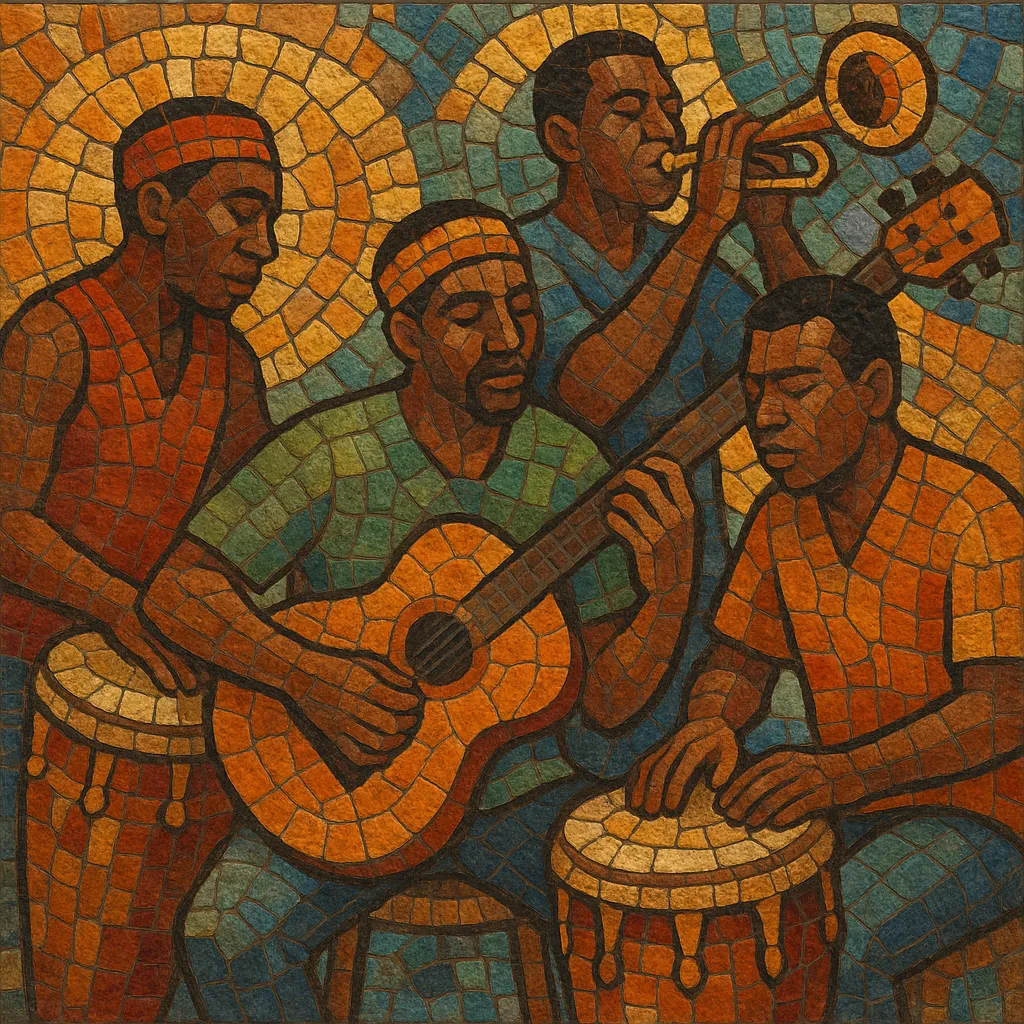Gumbé (often written gumbe) is a modern popular music of Guinea-Bissau built on driving, polyrhythmic percussion patterns led by the tina or gumbe chest drum. It blends local rhythmic cells and call‑and‑response vocals with electric guitars, bass, and occasional horns.
Songs are most often sung in Kriol (Guinea‑Bissau Creole) alongside Portuguese and local languages, and they balance danceable grooves with socially aware lyrics. The guitar figures frequently borrow lilting, highlife‑like lines, while the percussion creates a propulsive 4/4 or 12/8 feel that keeps the music firmly rooted in communal dance and celebration.
Gumbé’s rhythmic core descends from coastal West African drumming traditions and Creole performance practices that circulated between West Africa and the Caribbean during the Atlantic era. While the word itself appears in various Afro‑Atlantic contexts, in Guinea‑Bissau it came to denote a distinctly local popular style anchored by the tina drum and call‑and‑response singing.
The 1970s—around and just after independence in 1974—saw gumbé coalesce as a modern, urban popular music. Bands connected to the independence generation mixed traditional dance rhythms with guitars and amplifiers, framing gumbé as a symbol of national identity. The sound took shape in community centers, radio sessions, and modest studios, despite limited resources.
Through the 1980s and 1990s, artists refined gumbé’s blend of percussion, guitar vamps, and melodic hooks. Musicians in the Lusophone diaspora (especially Portugal) helped the style reach broader audiences, collaborating across Cape Verdean, Angolan, and other Afro‑Lusophone scenes while keeping the quintessential Bissau‑Guinean rhythmic foundation.
Contemporary gumbé continues to feature prominently in national festivities and popular media. Younger artists incorporate elements from highlife, Afrobeat, and Caribbean forms while preserving the dance‑centric, communal ethos and the characteristic tina‑led groove that define the genre.


